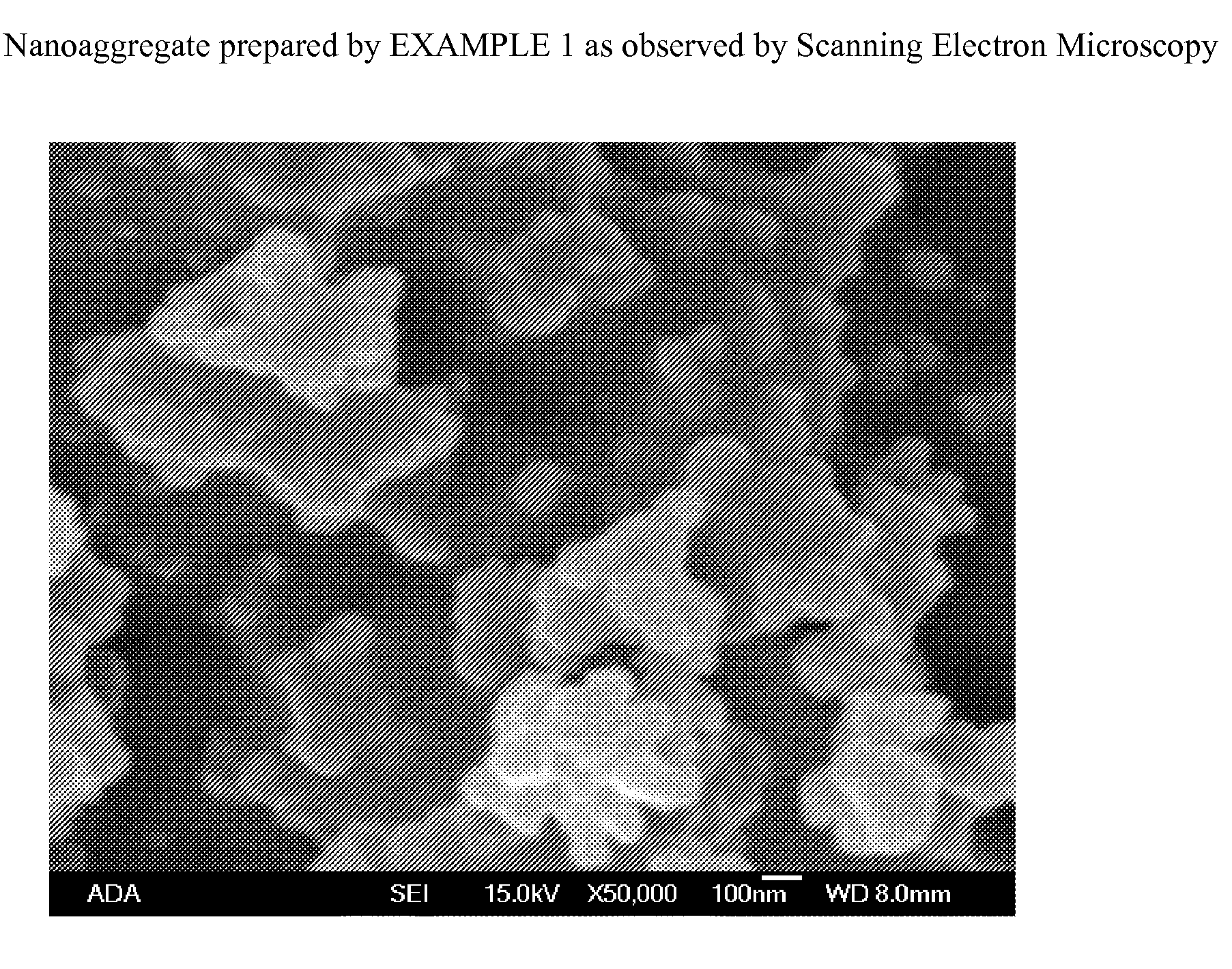Tooth fluoridating and remineralizing compositions and methods, based on nanoaggregate formation
a technology of applied in the field of tooth fluoridating and remineralizing compositions and methods, based on nanoaggregate formation, can solve the problems of tooth decay, tooth surface demineralization, and cavity ultimately forming at the lesion site, so as to prevent and/or repair weaknesses, and the effect of preparing fluorapatite or tooth mineral
- Summary
- Abstract
- Description
- Claims
- Application Information
AI Technical Summary
Benefits of technology
Problems solved by technology
Method used
Image
Examples
example 1
[0058]The nanoaggregate (or nanocomposite) of nano calcium fluoride and amorphous calcium carbonate phosphate fluoride (ACCPF) was synthesized by mixing 8 mL of carbonate containing 1 mol / L tripotassium phosphate, 16 mL of 1 mol / L potassium fluoride and 13.3 mL of 1.5 mol / L calcium chloride. The precipitate was washed with 2% ammonia hydroxide, followed by ethanol, and then dried. The x-ray powder diffraction pattern in FIG. 1 shows that the calcium fluoride was poorly crystalline, with measured d spacing (Å) of 3.11, 1.92, and 1.64, together with a broad band of ACCPF with maximum around 2θ=31. The infrared spectrum in FIG. 2 shows the wavenumbers of amorphous bands of phosphate at 575 and 1050 and amorphous bands of carbonate at 1420 and 1490. FIG. 3 shows the characterization of this sample by Scanning Electron Microscopy.
example 2
[0059]A non-aqueous, rosin-based varnish contains 10 wt-% calcium sulfate (Plaster of Paris), 6 wt-% disodium phosphate, and 5 wt-% sodium fluoride and has a calculated F / Ca molar ratio of 1.7. Each of these calcium, phosphate, and fluoride salts is present in the varnish in the form of solid particles, having an average diameter of about 25 μm. When this varnish is applied to the surface of a tooth inside the mouth, the salts dissolve readily in aqueous saliva, resulting in sufficient concentrations of calcium, phosphate, and fluoride ions in the proper ratios for the precipitation of a calcium fluoride / ACPF nanocomposite. The composite then converts to fluoride-containing apatite, the tooth mineral.
PUM
 Login to View More
Login to View More Abstract
Description
Claims
Application Information
 Login to View More
Login to View More - R&D
- Intellectual Property
- Life Sciences
- Materials
- Tech Scout
- Unparalleled Data Quality
- Higher Quality Content
- 60% Fewer Hallucinations
Browse by: Latest US Patents, China's latest patents, Technical Efficacy Thesaurus, Application Domain, Technology Topic, Popular Technical Reports.
© 2025 PatSnap. All rights reserved.Legal|Privacy policy|Modern Slavery Act Transparency Statement|Sitemap|About US| Contact US: help@patsnap.com



